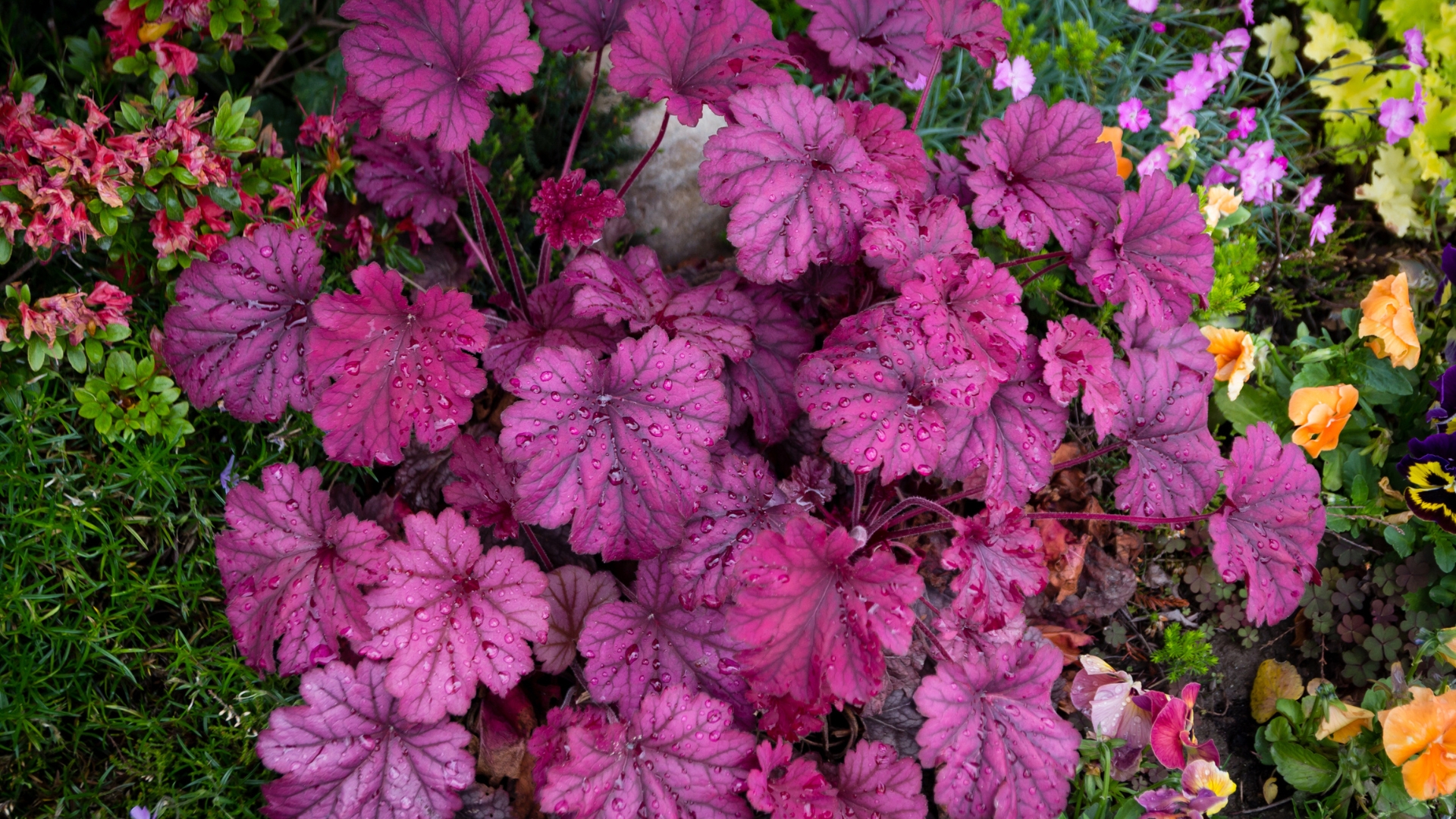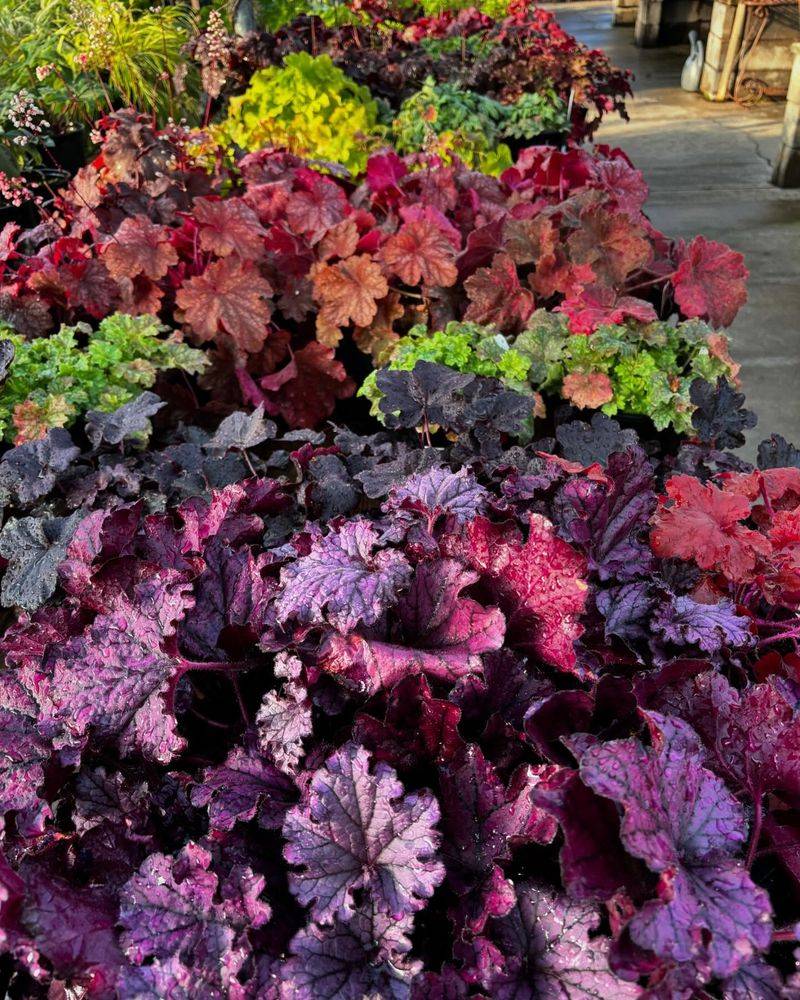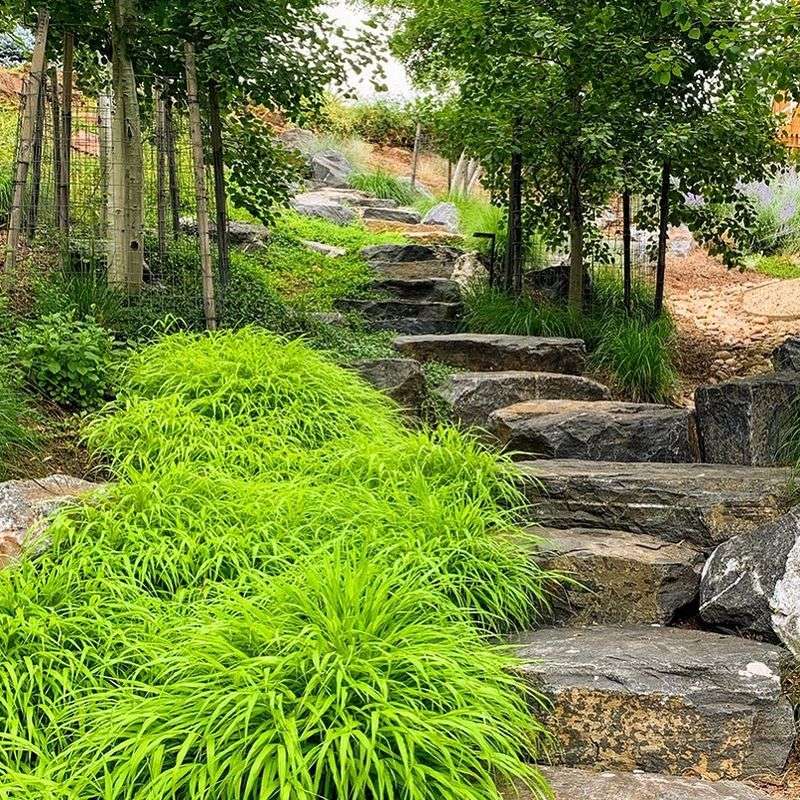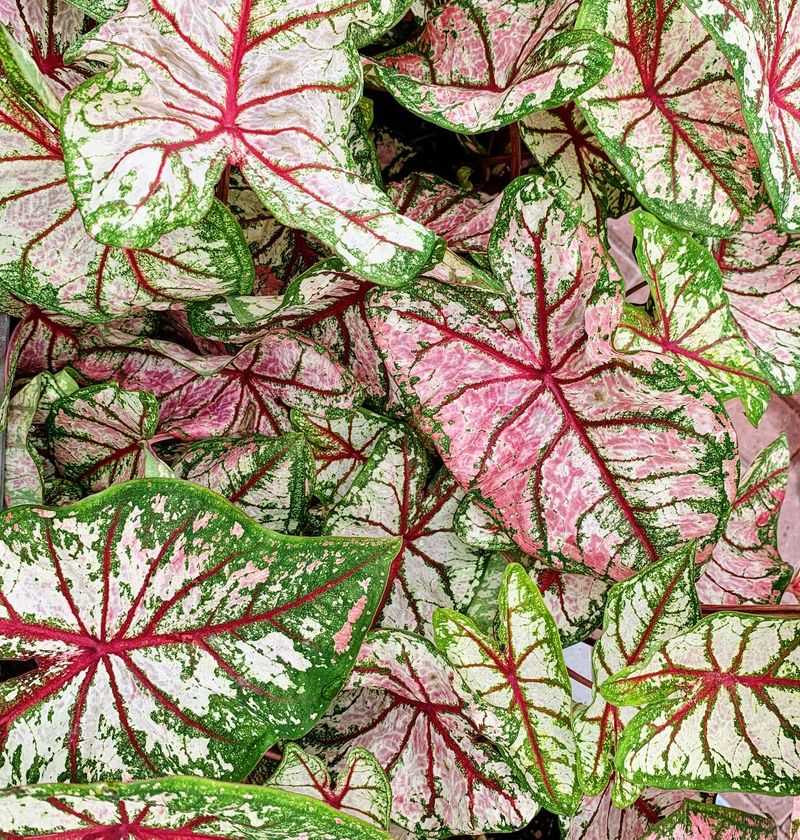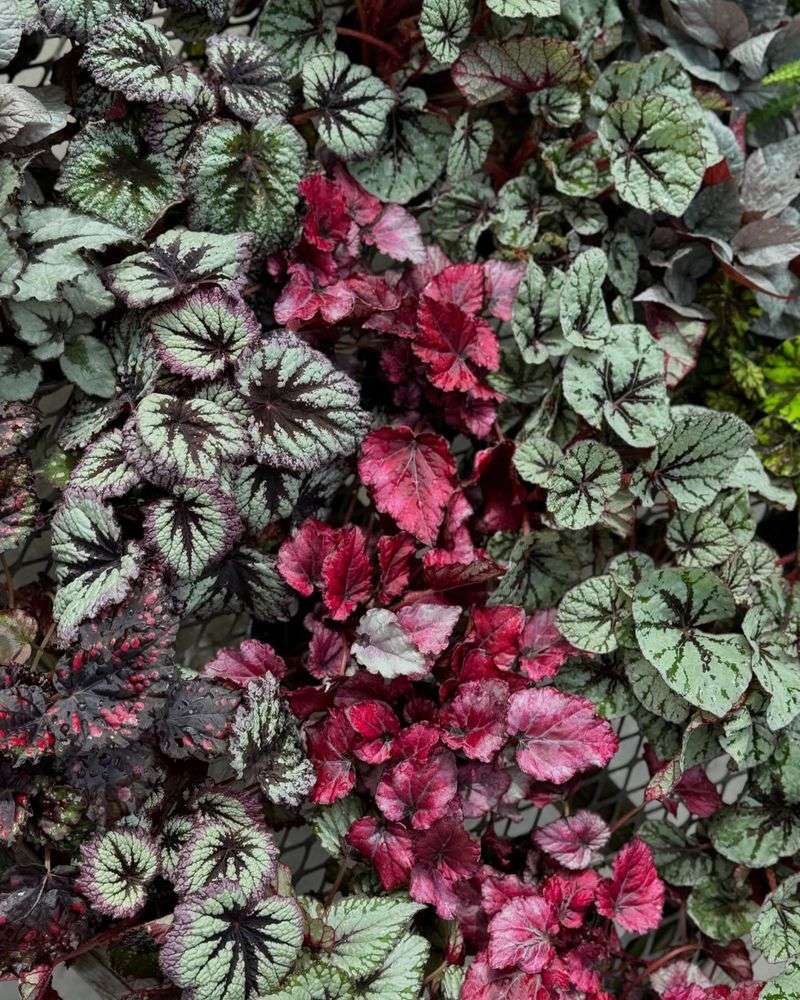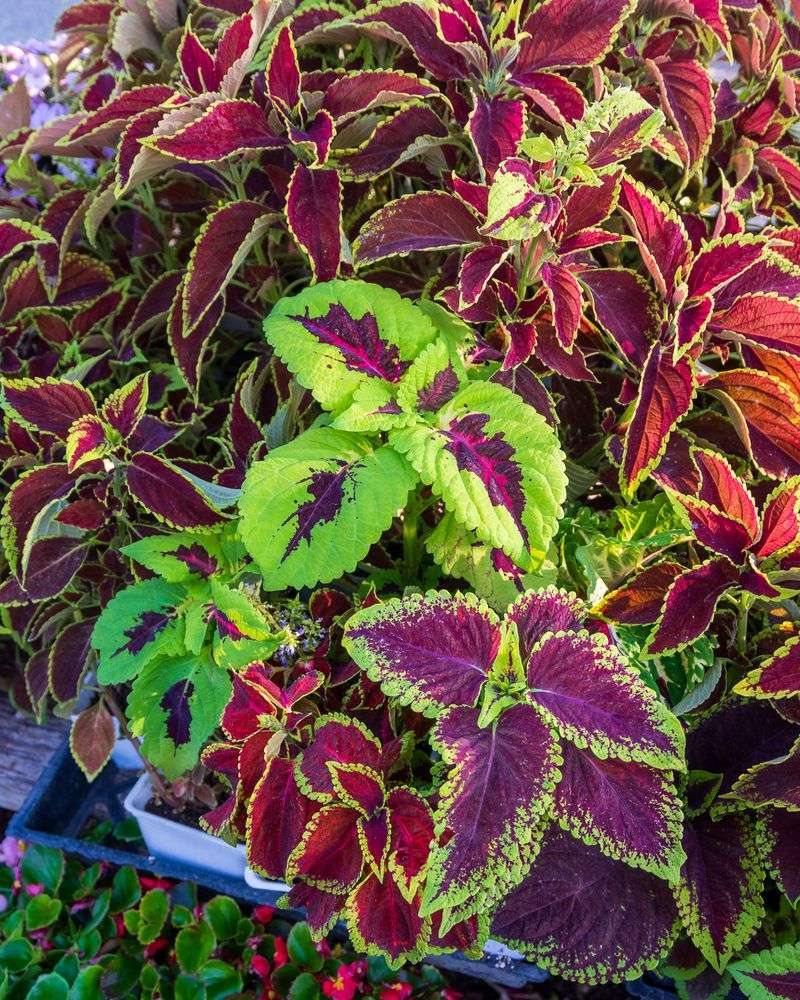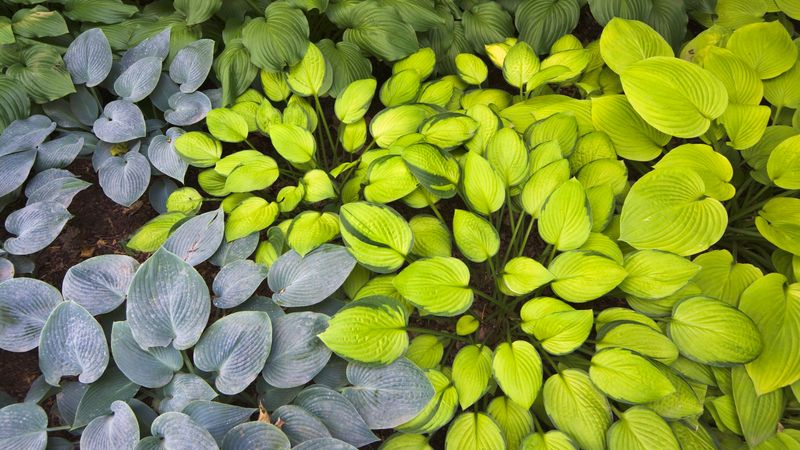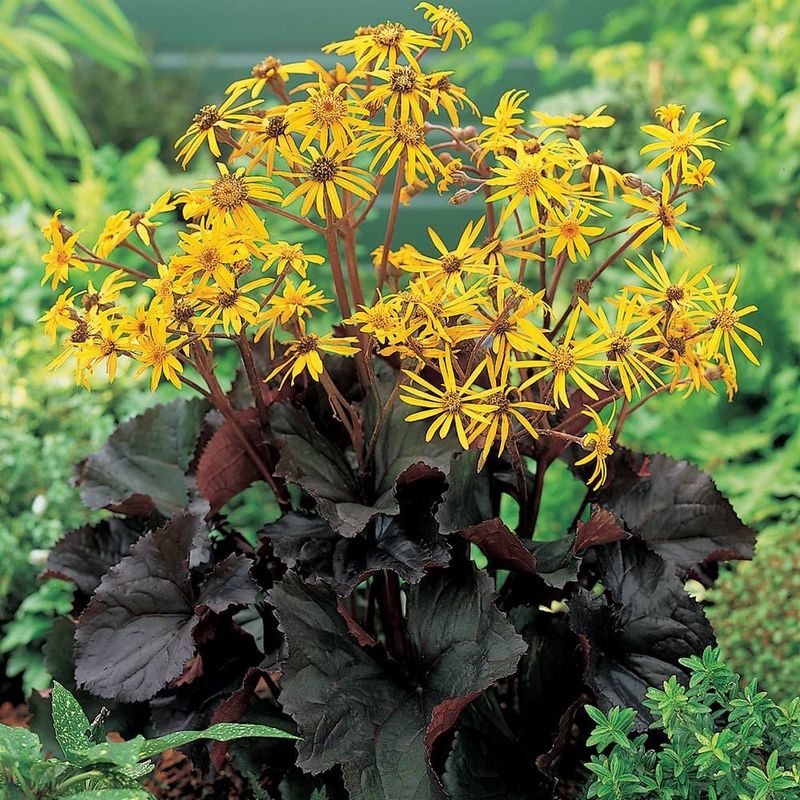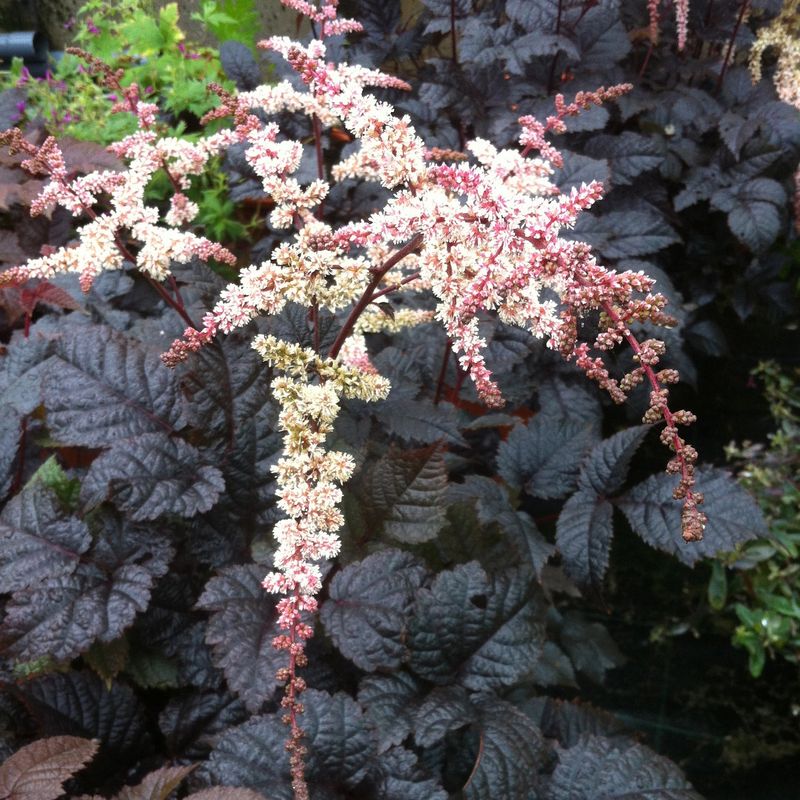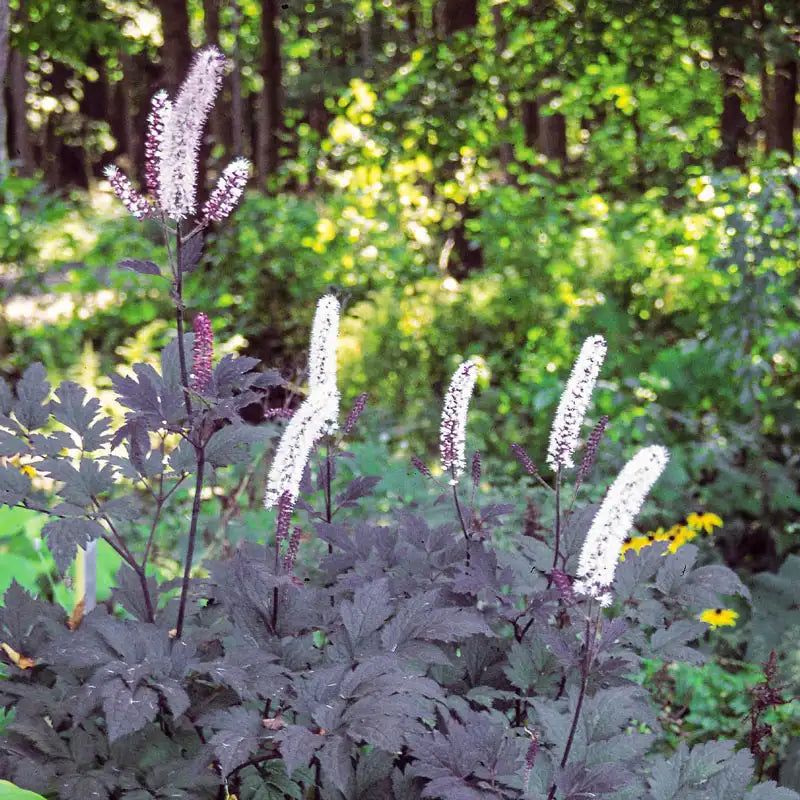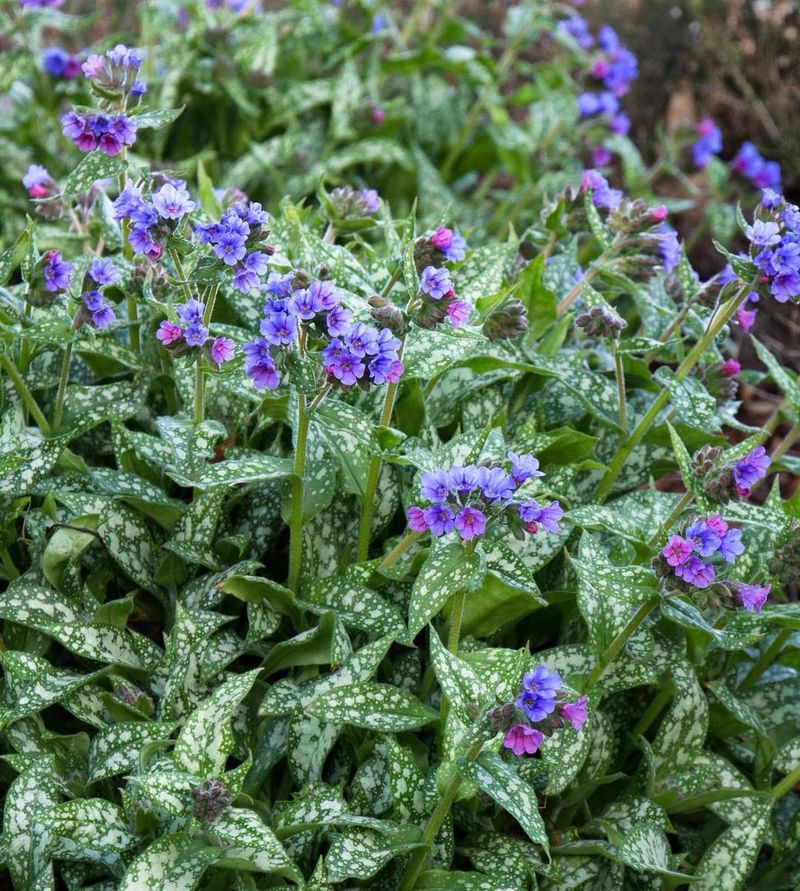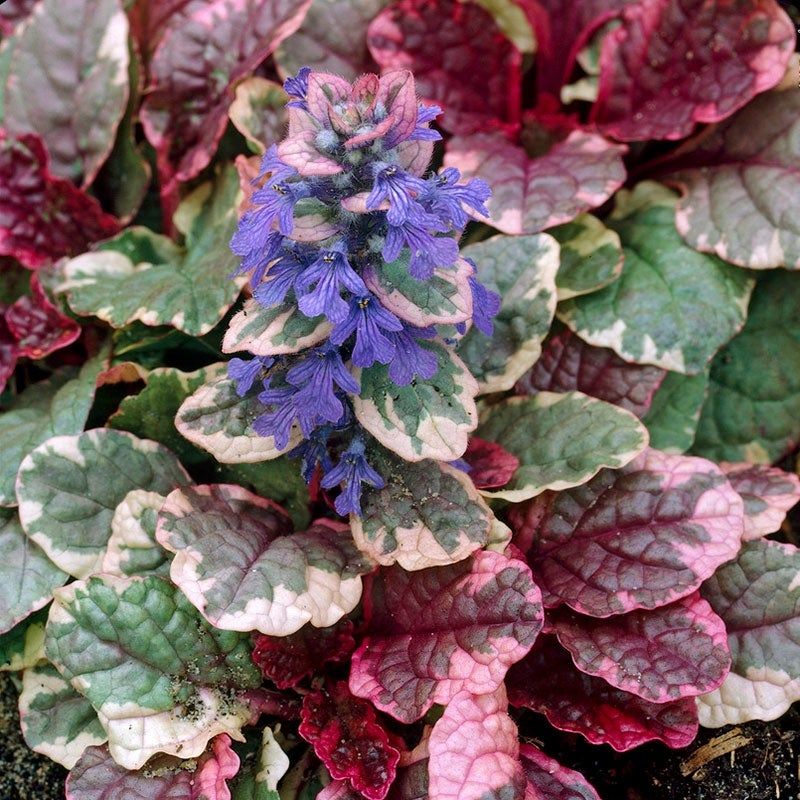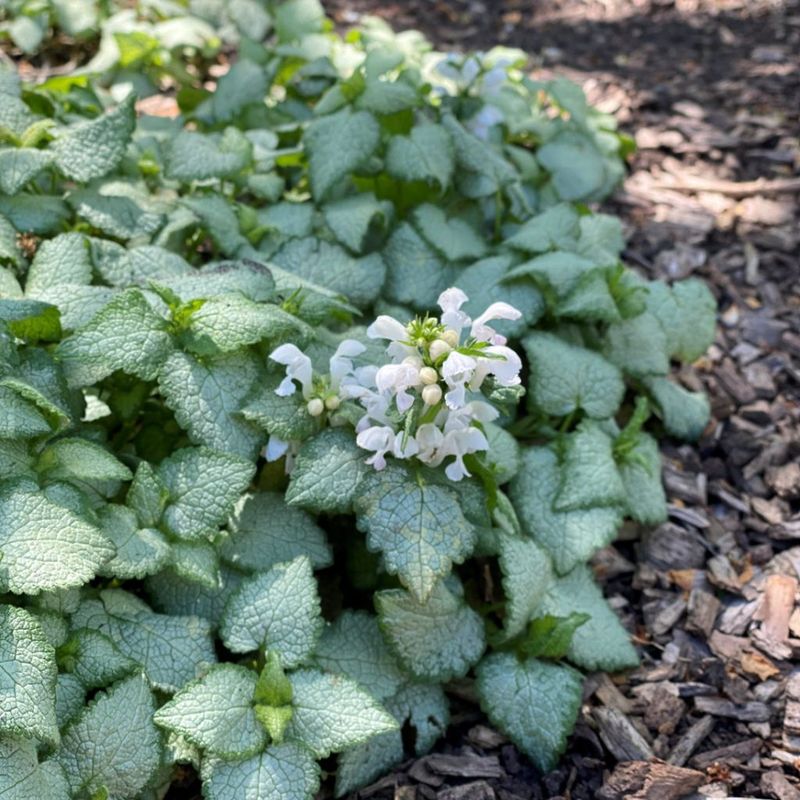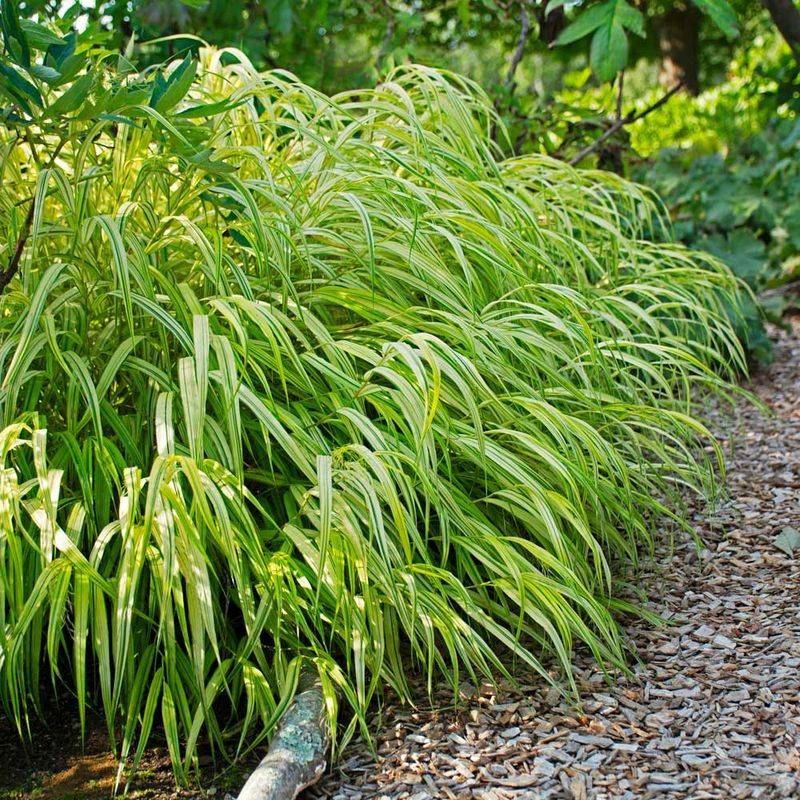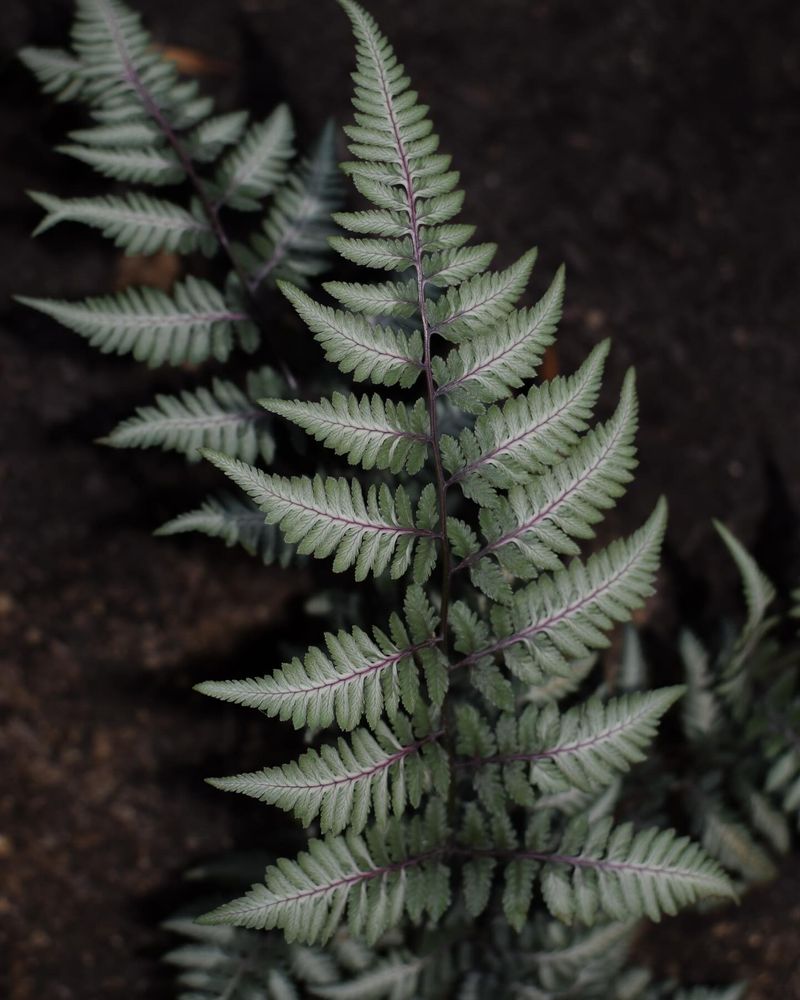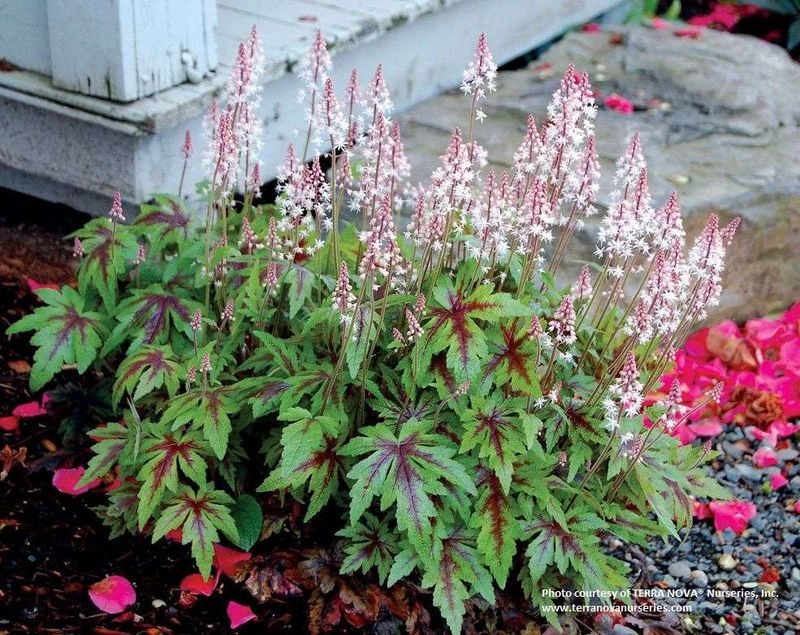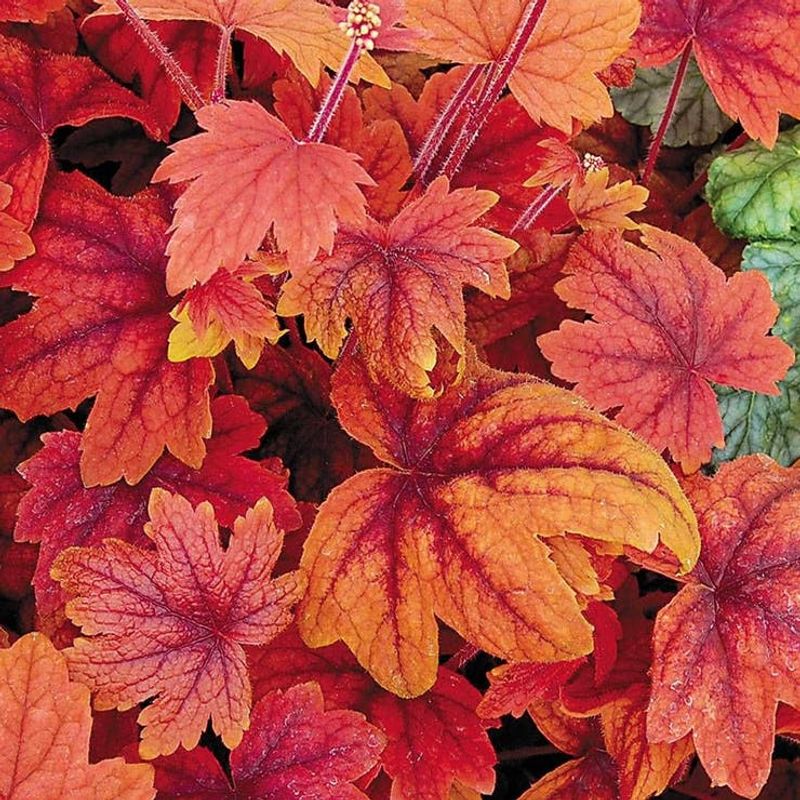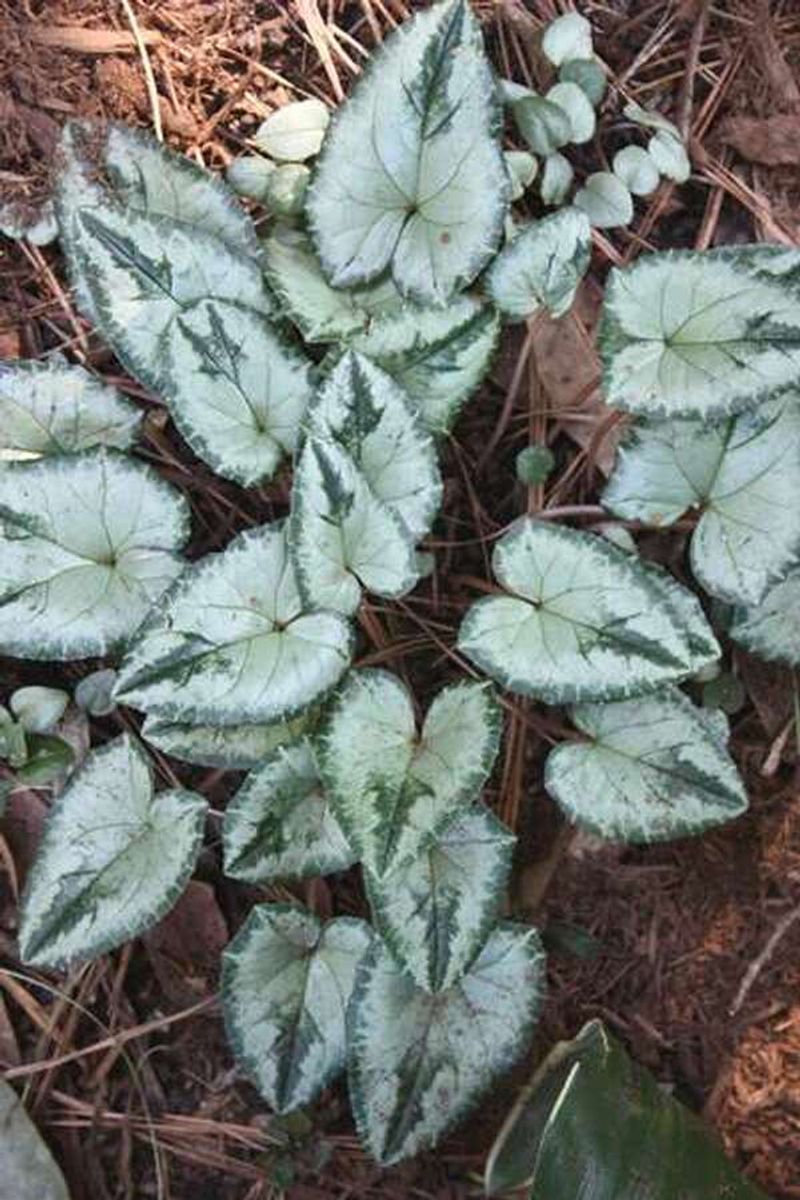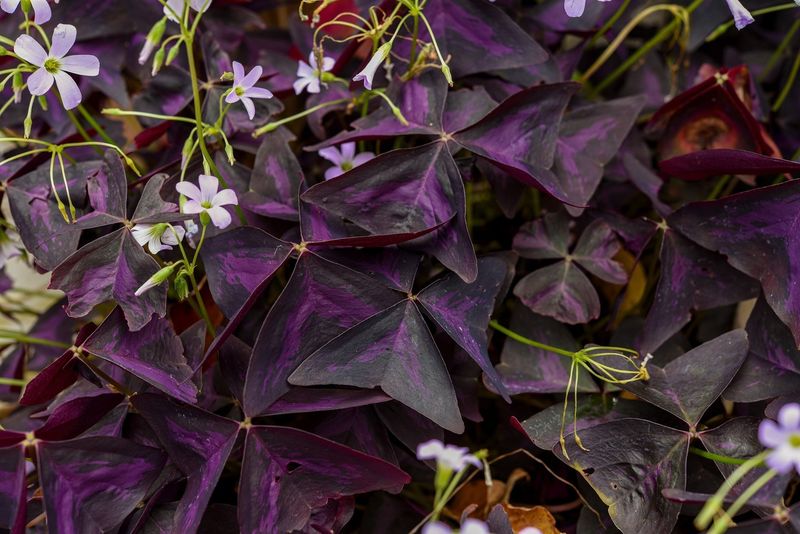Shady spots in your garden don’t have to be dull and lifeless. With the right plants, those darker corners can become vibrant showcases of color and texture. Many gardeners overlook the stunning variety of foliage plants that thrive in low-light conditions, bringing unexpected splashes of burgundy, gold, silver, and variegated patterns to shadowy spaces. These 20 colorful foliage plants will transform those challenging shaded areas into the most eye-catching parts of your garden.
1. Heuchera (Coral Bells)
Standing out like jewels in the shade, Heuchera varieties offer a treasure chest of colors from lime green to deep purple, amber to silver. Their ruffled, veined leaves create a stunning display even without flowers, though their delicate bell-shaped blooms add extra charm in summer.
Coral Bells form neat mounds that look spectacular when several colors are grouped together. They’re surprisingly tough despite their delicate appearance, handling drought once established and staying evergreen in milder climates.
Morning sun with afternoon shade provides the perfect lighting to bring out their richest colors. Plant them along pathways where their vivid foliage can be appreciated up close.
2. Japanese Forest Grass (Hakonechloa macra)
Golden cascades of arching foliage bring movement and light to the darkest corners of your garden. Japanese Forest Grass creates the illusion of a gentle waterfall with its graceful, flowing form that sways with the slightest breeze.
The ‘Aureola’ variety lights up shade with bright gold and green striped leaves that seem to glow against dark mulch or stones. Unlike many ornamental grasses that demand full sun, this woodland native thrives in partial to full shade.
Slow-growing but worth the wait, it forms perfect mounds reaching 12-18 inches tall. The foliage turns copper-pink in fall, adding another season of interest before winter dormancy.
3. Painted Fern (Athyrium niponicum)
Nature’s artwork comes alive in the frosted silver and burgundy fronds of Japanese Painted Ferns. Each leaf appears hand-painted with metallic silver overlays on purple-red stems, creating a shimmer effect even in deep shade where other plants fade into darkness.
Low-maintenance and deer-resistant, these ferns bring sophisticated color without demanding much attention. The ‘Ghost’ variety pushes the silver coloration to dramatic extremes, while ‘Pictum’ offers the classic silvery-burgundy contrast that earned this fern multiple garden awards.
Painted ferns grow slowly into 18-inch clumps that pair beautifully with dark-leaved heuchera or bright hostas. Their colors intensify in cooler weather, making spring and fall their showiest seasons.
4. Caladium
Heart-shaped leaves in candy colors make caladiums the show-stoppers of shade gardens. Their paper-thin foliage showcases spectacular patterns—speckled, veined, and splashed with white, pink, red and green—that look hand-painted by an artist with a flair for the dramatic.
Native to tropical rainforest floors, caladiums bring exotic flair to ordinary shade gardens. The ‘White Queen’ variety flaunts crisp white centers with green edges and red veins, while ‘Red Flash’ explodes with crimson centers on green leaves spotted with pink.
Treat these tropical beauties as annuals in cooler climates or dig up the tubers before frost. In warm regions, they’ll return year after year, often growing larger and more impressive with age.
5. Rex Begonia
Royal in both name and appearance, Rex Begonias rule the shade garden with their fantastically patterned leaves. No two varieties look alike—some sport spiral patterns, others metallic sheen, and many combine several colors in mosaic-like arrangements of silver, purple, pink, and green.
These divas of the plant world prefer high humidity and protected locations. Their intricate leaf patterns—often featuring zones of color radiating from the center—create living art that outshines most flowering plants.
Perfect for containers where their detailed patterns can be appreciated up close, Rex Begonias add tropical drama to porches and patios. The ‘Escargot’ variety features a spiral pattern reminiscent of its snail namesake, while ‘Fireworks’ explodes with silver, burgundy and green.
6. Coleus
Blazing with colors that defy their shady homes, modern coleus varieties have come a long way from grandma’s garden. Today’s cultivars offer mind-boggling diversity—from the near-black ‘Black Dragon’ to the electric pink ‘Watermelon,’ these foliage champions bring the rainbow to dark corners.
Unlike many shade plants that offer subtle coloration, coleus brings bold, saturated hues that pop against green backgrounds. Their painterly leaves might feature scalloped edges, sharp points, or frilly ruffles, adding textural interest alongside their carnival of colors.
Easy to grow from seed and simple to propagate from cuttings, coleus gives tremendous bang for your gardening buck. Many modern varieties hold their vibrant colors in more sun than their ancestors could tolerate.
7. Brunnera (Siberian Bugloss)
Silver frost seems to have settled permanently on the heart-shaped leaves of variegated Brunnera, creating one of the brightest spots in the shade garden. The ‘Jack Frost’ variety features green veins threading through metallic silver leaves, creating a stained-glass effect that catches every bit of available light.
Blue forget-me-not flowers dance above the foliage in spring, but the leaves are the real stars of this show. Even in the deepest shade, Brunnera’s silvery foliage stands out like moonlight captured in plant form.
Tough despite its delicate appearance, Brunnera handles dry shade once established—a rare quality among shade plants. Its silver leaves create magical contrast when planted near dark-leaved companions like black mondo grass or chocolate-colored heuchera.
8. Hosta
Kings and queens of the shade garden, hostas offer an almost endless variety of colors and patterns that thrive where other plants struggle. Beyond the basic green varieties, look for blue-tinted cultivars with waxy coatings, gold specimens that brighten dark corners, and variegated types with cream, white or yellow margins.
‘June’ showcases blue-green leaves with gold centers that seem to glow in dim light. ‘Patriot’ sports crisp white edges around deep green centers, while ‘Fire Island’ emerges in spring with brilliant yellow leaves on red stems.
Size diversity adds to their appeal—tiny ‘Blue Mouse Ears’ forms perfect 8-inch mounds, while mammoth ‘Empress Wu’ can reach 4 feet tall with leaves bigger than dinner plates.
9. Ligularia (Leopard Plant)
Bold and architectural, Ligularia makes a dramatic statement with massive, glossy leaves that can span up to a foot wide. The dentata varieties showcase rounded, serrated edges while ‘The Rocket’ features arrow-shaped foliage—both bringing strong structural elements to soft shade plantings.
‘Britt-Marie Crawford’ steals the show with its deep chocolate-burgundy leaves that look almost polished. Yellow daisy-like flowers rise on tall stems above the foliage in summer, creating striking vertical accents against the broad leaf backdrop.
Moisture-loving by nature, Ligularia thrives in those problematic damp shade spots where other plants might rot. Its large-scale presence works beautifully as a focal point or to anchor a corner of a woodland garden.
10. Astilbe
Feathery plumes rise like colorful smoke signals above the lacy, fern-like foliage of Astilbe. While their fluffy flower spikes in pink, red, lavender or white steal attention in early summer, the bronze-tinged emerging foliage and season-long textural presence make them valuable even out of bloom.
The ‘Chocolate Shogun’ variety brings unexpected color with its deep mahogany-brown leaves that create dramatic contrast against standard green shade plants. ‘Color Flash’ starts green in spring before transforming through shades of burgundy, purple, and orange as seasons progress.
Astilbes flourish in that challenging combination of shade and moisture where many plants fail. Their fountain-like growth habit adds vertical interest ranging from dwarf 8-inch varieties to statuesque 4-foot specimens.
11. Cimicifuga (Bugbane)
Dramatic dark foliage reaches skyward on this woodland native, now often called Actaea. The purple-leaved varieties like ‘Hillside Black Beauty’ and ‘Brunette’ showcase near-black foliage with deeply cut, fern-like texture that creates sophisticated contrast in the shade garden.
Tall wands of fragrant white flowers stretch up to 6 feet high in late summer, swaying gracefully above the dark foliage. These blooms attract butterflies while the plant’s common name, Bugbane, hints at its ability to repel less desirable insects.
Patience rewards gardeners who grow this slow-developing perennial. Its dramatic height and unusual coloration create a woodland atmosphere, especially when planted in groups where its bottle-brush flowers can create a constellation effect above lower shade plants.
12. Pulmonaria (Lungwort)
Spotted, splashed, and streaked with silver, Pulmonaria leaves bring constellations of brightness to the darkest corners of the garden. These low-growing perennials feature leaves that look as if someone flicked silver paint across their surface, with each variety offering different patterns and intensities of spotting.
‘Trevi Fountain’ displays long, narrow leaves heavily spotted with silver, while ‘Silver Bouquet’ is so thoroughly silvered it appears almost white. The silver markings intensify as the leaves mature, creating an ever-changing display throughout the growing season.
Pink buds open to blue flowers in early spring, creating a charming two-tone effect. Deer-resistant and long-lived, Pulmonaria thrives in the challenging dry shade beneath trees where many plants struggle to survive.
13. Ajuga (Bugleweed)
Carpet your shade garden with living stained glass using the jewel-toned foliage of Ajuga. This low-growing groundcover offers surprising color variety—’Black Scallop’ features glossy near-black leaves, ‘Burgundy Glow’ swirls with cream, pink and purple tones, while ‘Chocolate Chip’ delivers tiny chocolate-brown leaves with burgundy highlights.
Spikes of blue flowers appear in spring, hovering just above the colorful foliage carpet. At just 4-6 inches tall, Ajuga creates a living mulch that suppresses weeds while adding vibrant color to areas where grass won’t grow.
Fast-spreading by runners, a few starter plants can fill large areas within a couple of seasons. Use it to underplant taller shade specimens or to flow between stepping stones where its color can be appreciated up close.
14. Lamium (Dead Nettle)
Silvery paths of brightness wind through shady spots where Lamium spreads its illuminated foliage. The silver-centered leaves with green edges create paths of light that seem to glow in dim corners, brightening areas where few flowering plants succeed.
‘White Nancy’ offers the brightest silver coloration with crisp white flowers, while ‘Beacon Silver’ adds pink blooms above its metallic foliage. This low-maintenance groundcover handles poor soil and root competition, making it perfect for planting under trees.
Quick to establish but not aggressively invasive like some groundcovers, Lamium fills spaces with just 6-8 inches of height. Its trailing habit also makes it excellent for container edges where the silver foliage can cascade over sides, adding dimension to shade planters.
15. Hakone Grass (Hakonechloa)
Ribbons of gold and green cascade like a waterfall with the graceful arching stems of Hakone Grass. The most popular variety, ‘Aureola,’ features bright yellow leaves striped with green that seem to capture and hold sunlight even in shaded locations.
Unlike most ornamental grasses that demand full sun, this Japanese native evolved in mountain forest settings. Its flowing form creates movement in still shade gardens, with each blade appearing backlit when autumn sunlight filters through the canopy.
Patience pays off with this slow-grower—initially small clumps gradually develop into spectacular 12-18 inch mounds over several years. The foliage turns copper-pink in fall before going dormant for winter, offering multi-season interest in challenging low-light areas.
16. Ferns (Various Species)
Beyond the common Boston fern lie dozens of colorful fern varieties that bring unexpected hues to shade gardens. The Japanese Painted Fern offers silver-frosted fronds with burgundy stems, while ‘Autumn Fern’ emerges with copper-red new growth that gradually turns green as it matures.
‘Lady in Red’ features bright red stems supporting green fronds, creating striking linear contrast in woodland settings. For truly unusual coloration, the native ‘Dixie Wood Fern’ develops blue-green fronds that appear almost turquoise in certain lights.
Most colorful ferns prefer dappled rather than deep shade, which helps intensify their unique pigmentation. Their prehistoric appearance adds timeless elegance to modern gardens while their varied colors and textures create living tapestries when grouped in collections.
17. Tiarella (Foamflower)
Maple-like leaves splashed with dramatic burgundy centers make Tiarella a standout even when not in bloom. The dark central markings create star-shaped patterns that persist from spring through fall, intensifying as temperatures cool.
‘Sugar and Spice’ features deeply cut leaves with chocolate-purple centers that radiate outward along the veins. ‘Crow Feather’ showcases dramatic black central markings that look painted on. These native woodland plants form neat mounds of distinctively marked foliage that complement other shade-lovers.
Delicate bottle-brush flowers in white or pale pink rise above the colorful leaves in spring, resembling foam (hence the common name). Tiarella thrives in the same conditions as Heuchera but handles deeper shade with grace, making it perfect for those darkest garden corners.
18. Heucherella (Foamy Bells)
Marriage makes magic in these natural hybrids that combine the best features of Heuchera and Tiarella. Their deeply lobed leaves showcase Tiarella’s leaf shape with Heuchera’s spectacular coloration, creating designer foliage that changes through the seasons.
‘Sweet Tea’ emerges in spring with huge cinnamon-orange leaves that darken to tea-brown with purple centers as summer progresses. ‘Solar Eclipse’ features scalloped leaves with lime edges surrounding dark burgundy centers that seem to glow with inner light.
More tolerant of humidity than their Heuchera parents, Heucherellas perform beautifully in challenging southeastern gardens. Their mounding habit stays neat without spreading aggressively, making them perfect specimens for shade containers where their evolving colors can be closely appreciated.
19. Cyclamen (Hardy Types)
Marbled silver and green leaves create winter interest long after other perennials have disappeared. Hardy cyclamen varieties (Cyclamen hederifolium and C. coum) feature heart-shaped or ivy-shaped leaves with intricate silver patterns that look hand-painted against the forest floor.
Each leaf showcases unique silver marbling—some heavily frosted, others with delicate veining or Christmas-tree patterns. The foliage appears in autumn for C. hederifolium, lasting through winter before going dormant in summer—a reverse growing season from most garden plants.
Dainty flowers in pink or white appear either before the leaves (in fall) or alongside them (in winter), depending on species. These tough little beauties naturalize under trees, creating silver carpets that brighten the darkest months of the year.
20. Oxalis (Purple Shamrock)
Butterflies seem to have landed in the garden when purple oxalis unfurls its deep violet leaves. Each leaf consists of three triangular leaflets that fold downward at night and open with the morning light, creating daily movement that brings the shade garden to life.
The deepest purple varieties like ‘Triangularis’ and ‘Plum Crazy’ provide rich color that almost appears black in certain lights. Delicate pink flowers rise above the foliage on thin stems, creating charming contrast against the dark leaves.
Easy to grow and adaptable to various light conditions, purple oxalis works beautifully in containers where its dramatic coloration can complement silver or chartreuse companions. In frost-free areas it makes an outstanding groundcover, creating purple carpets beneath shrubs and trees.

